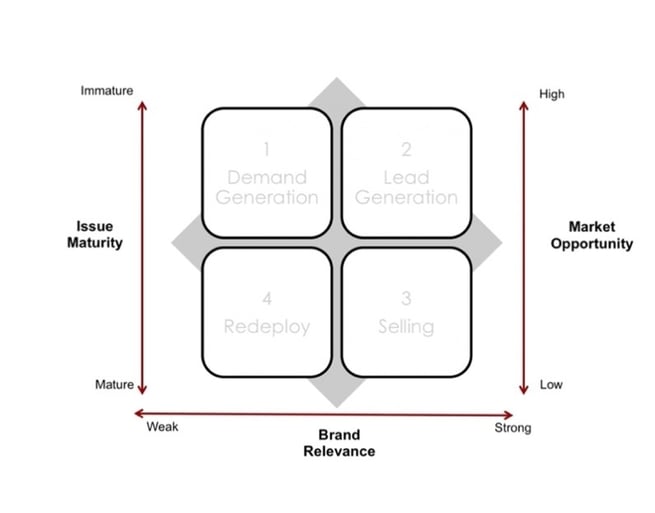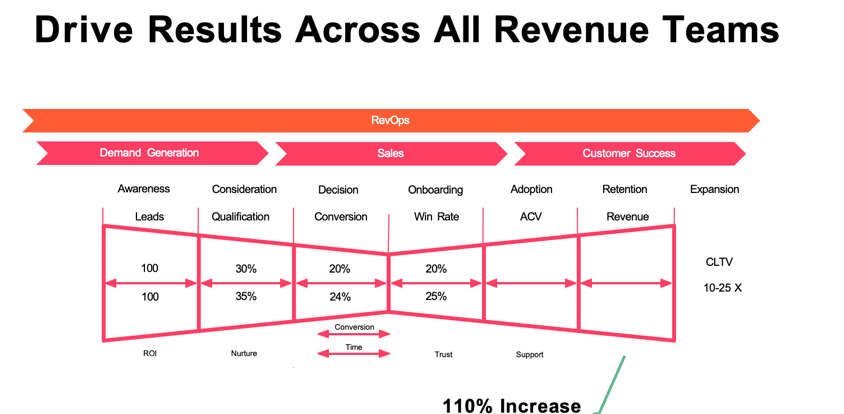Unlocking Growth: The Winning Strategy For Building Brand Awareness And Sustainable Success
No two go-to-market strategies are the same. Nor should they be.
Yet all B2B companies could benefit from a proven playbook—one that factors in their unique customer profiles, products, and market conditions, not to mention their team's technical acumen, industry expertise, and service methodology.
HubSpot defines a go-to-market strategy (GTM) as “a step-by-step plan created to successfully launch a product to market.” What it means is that your GTM strategy defines how you literally connect your product with your potential customers. A GTM strategy needs to answer three main questions:
- who the customers are,
- what the offering is,
- and how the target customers can be reached in a scalable and repeatable way.
In simple terms, a go-to-market strategy is an outline of how the product reaches your customers.
In the modern digital sales environment, identifying a winning Go-To-Market (GTM) strategy can feel like chasing a mirage. Does one even exist?
The seismic rise of digital engagement, powerful digital technology, and millennials and Gen-Z as the dominant customer segments are disrupting the whole sector and changing the way in which B2B companies go to market. Therefore, sales and growth leaders need to be laser-focused on customer sentiment, shifts in demand, and the requirements of different buying stages.
While there's no universal remedy, a potent new combination has surfaced through the nose: the fusion of Demand Generation (Demand Gen) with the bowtie revenue model.

Understanding the Ingredients
Demand Gen transcends conventional branding—it includes a complete spectrum of activities designed to shepherd prospects through the entire sales funnel. From igniting initial awareness to nurturing leads, closing pivotal deals, and nurturing long-term customer relationships, Demand Gen is indeed the engine that propels growth. Meanwhile, the bowtie model, pioneered by Winning By Design, places a premium on customer success and retention, laying the groundwork for sustainable expansion.
The Power of Synergy
This approach serves as a unifying force, rallying Marketing, Sales, and Customer Success teams behind a shared objective. You want to nail the harmony: your teams operating in concert, united in their mission to acquire and retain high-value clients. Yet, achieving such alignment isn't without its pains; it requires a strategic framework, beginning with crystal-clear goals.

Figure 1 | Ebsta
Plotting the Course
Here's a navigational chart to steer your organization's course:
- Define Your Objectives: Begin by picturing and outlining your goals and then reverse-engineering your path to success.
- Craft Your Ideal Customer Profile (ICP): Gain profound insights into your target audience by developing detailed Ideal Customer Profiles and personas.
- Tailor Your Demand Gen Approach: Go for a strategy that suits your organization's needs, whether it be broad-reaching or specifically targeted.
- Customize Your Tactics: Fine-tune your strategy for each phase of the bowtie revenue model, identifying responsibilities accordingly.
Strategies for Each Funnel Stage
- TOFU (Top of Funnel): Cultivate brand awareness through a blend of content marketing, events, and enticing free trials.
- MOFU (Middle of Funnel): Concentrate your efforts on nurturing leads across diverse channels.
- BOFU (Bottom of Funnel): Highlight your solutions' tangible ROI through compelling case studies and persuasive testimonials.
- Beyond BOFU: Foster enduring customer loyalty through immersive community engagement and tailored loyalty programs, underpinned by accessible customer portals and comprehensive knowledge bases.
Critical Functions and Metrics
Key functions deserving of your attention include account mapping, channel outreach distribution, segmentation, rigorously detailed buyer’s journey mapping, lead scoring, rigorous analysis of intent data, insightful lookalike modeling, and comprehensive attribution reporting. Additionally, you will need to monitor essential metrics such as Client Lifetime Value (CLV), close rate, sales cycle velocity, average deal size, conversion rate, customer acquisition cost (CAC), and cost per lead.
Building the Dream Team and Tech Stack
Building an agile and proficient team is a must.
Assemble the necessary talent, including Marketing (content, social, product, and event teams), Sales (accomplished account executives and adept business development representatives), Business Intelligence (astute data analysts to glean actionable insights), Customer Relations (to nurture enduring relationships), and a robust tech stack. Consider leveraging a comprehensive platform like HubSpot to effortlessly support your endeavors.
The Flywheel Model: Propelling Growth and Prosperity
In summary, by combining Demand Gen with the bowtie revenue model and strategically aligning your teams, you pave the path for sustained growth and prosperity. The symbiotic energy engendered by this approach powers your organization's upward trajectory, creating a self-reinforcing cycle of expansion and customer satisfaction.
READ MORE: 6 LEAD SCORING TIPS EVERY HUBSPOT USER NEEDS
Stay Informed with Flawless Inbound
To receive tailored insights and updates on Sales and Marketing enablement, sign up for our newsletter or follow us on LinkedIn today. Propel your organization to new heights and unlock its full potential with Flawless Inbound.
.png)